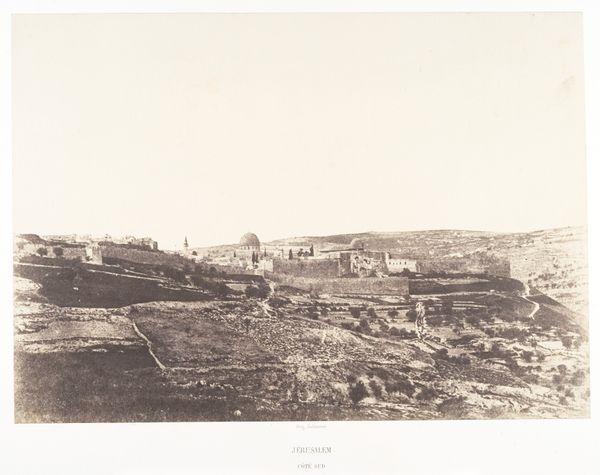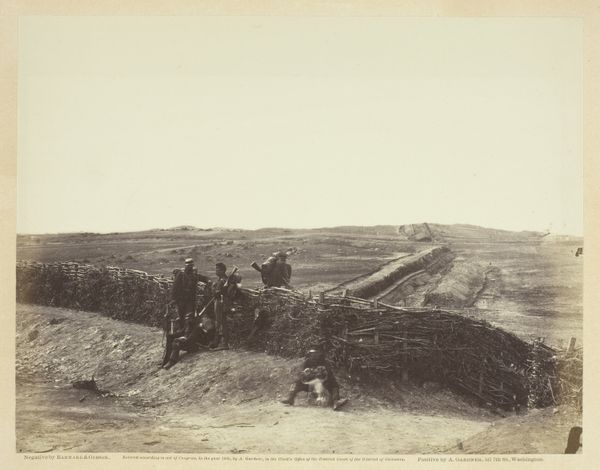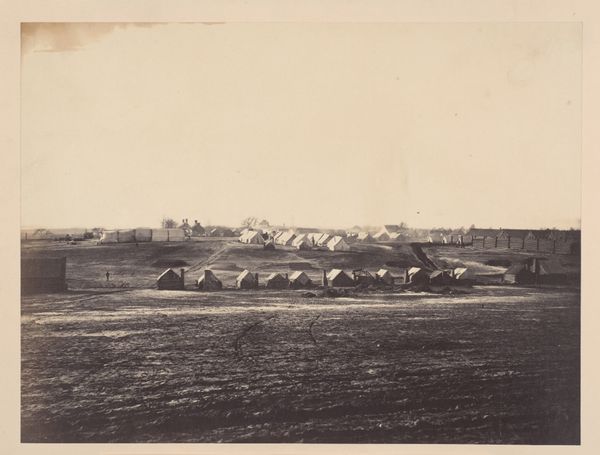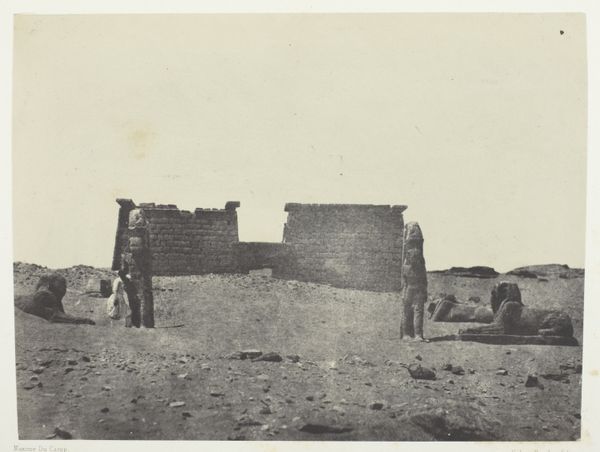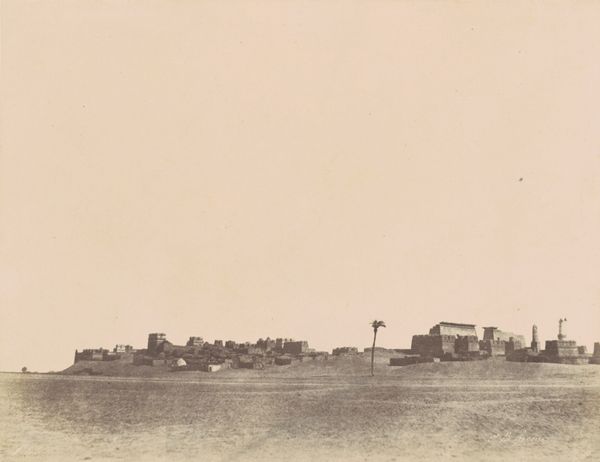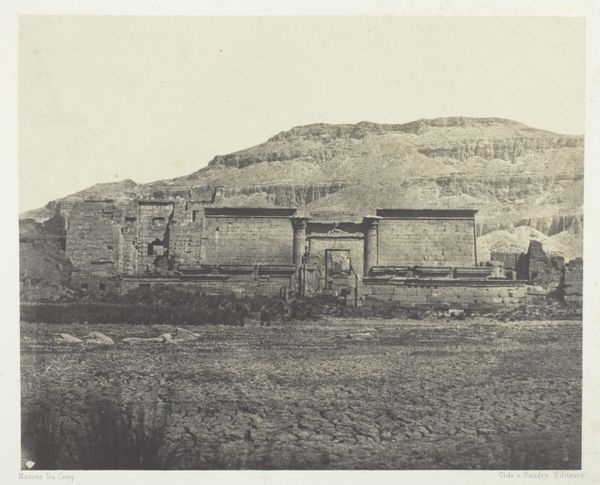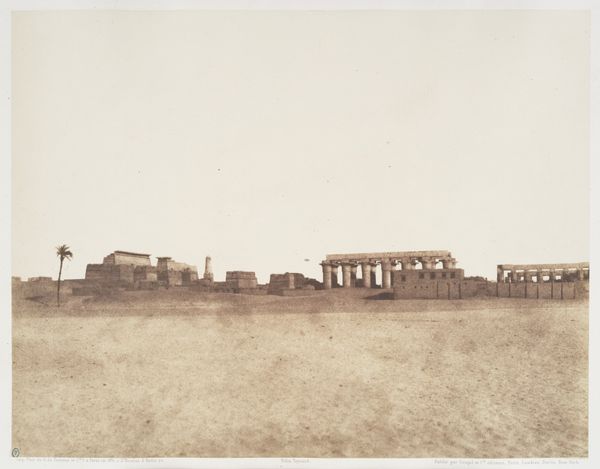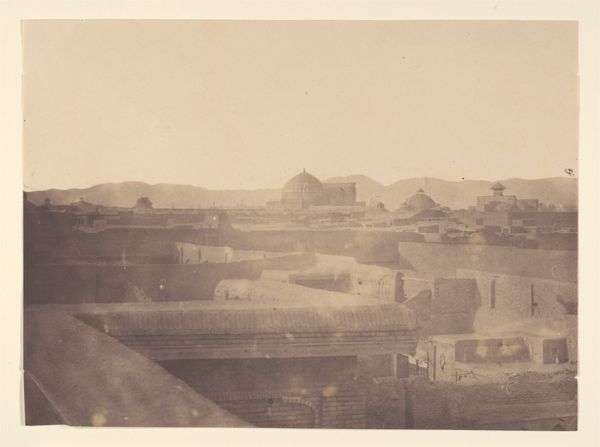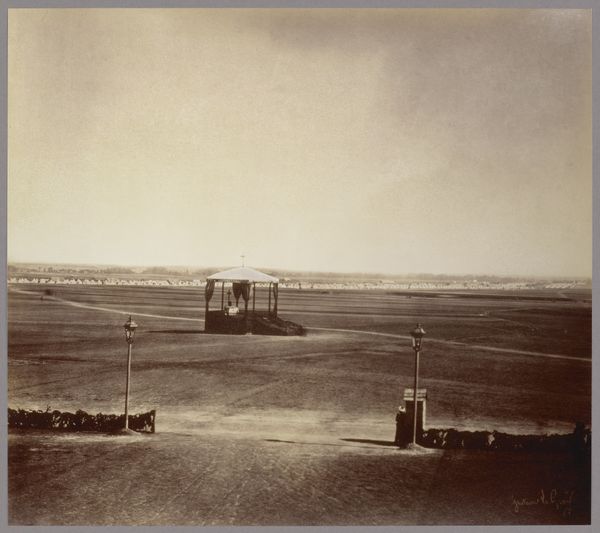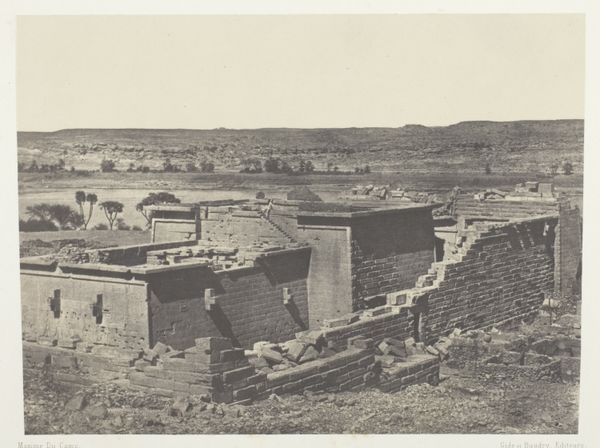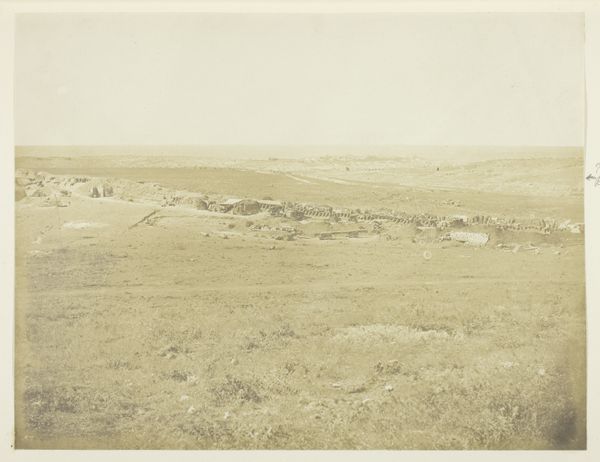
daguerreotype, photography, architecture
#
landscape
#
daguerreotype
#
ancient-egyptian-art
#
photography
#
ancient-mediterranean
#
architecture
Dimensions: 9 1/8 x 11
Copyright: Public Domain
Curator: This is John Beasley Greene's photograph, "Temple de Deboud," created using the daguerreotype process between 1853 and 1854. Editor: The muted tones create a sense of antiquity. The horizon line feels vast and stretches back into time. The weight of history in the ancient architecture and also in this early form of photography. Curator: Absolutely. What’s compelling is Greene's approach. Instead of focusing solely on the temple's grandeur, he includes the landscape, highlighting the materials he was using but also the location the temple inhabited. We must remember this photograph involved extensive labor: from preparing the plates, the journey to photograph in situ to transporting equipment. Editor: And consider the visual language! The temple itself, a cluster of solid forms against that limitless sky. Temples like Debod were often dedicated to specific deities, serving as focal points for ritual and divine connection. It’s intriguing to imagine what Greene, photographing this site in the 19th century, made of those layers of meaning and faith. Curator: It's fascinating to me how Greene exploits the capabilities of the daguerreotype. Its mirror-like surface, the incredible detail it captures in the stonework, it’s not just about representing the temple, it's about capturing the light interacting with the temple materials. Editor: Yes, and that very interaction lends it an ethereal quality, almost a blurring between the sacred and the tangible. There’s a definite tension between preservation and interpretation that photography uniquely addresses. It asks questions about cultural memory and enduring legacy, which seems very apt here. Curator: In the end, this image reflects not just a place or structure, but a network of materials, labor, and evolving technological processes that facilitated this early modern vision of an ancient space. Editor: Indeed. Greene has composed more than just an image; he has presented an enduring testament to faith, memory, and how they intersect.
Comments
No comments
Be the first to comment and join the conversation on the ultimate creative platform.

